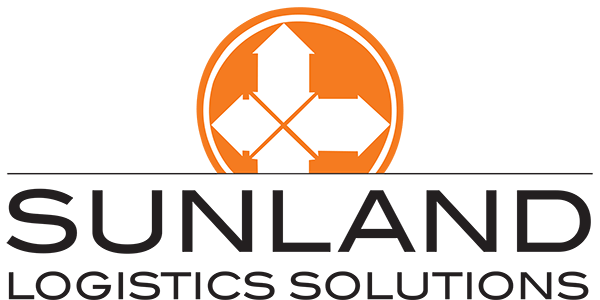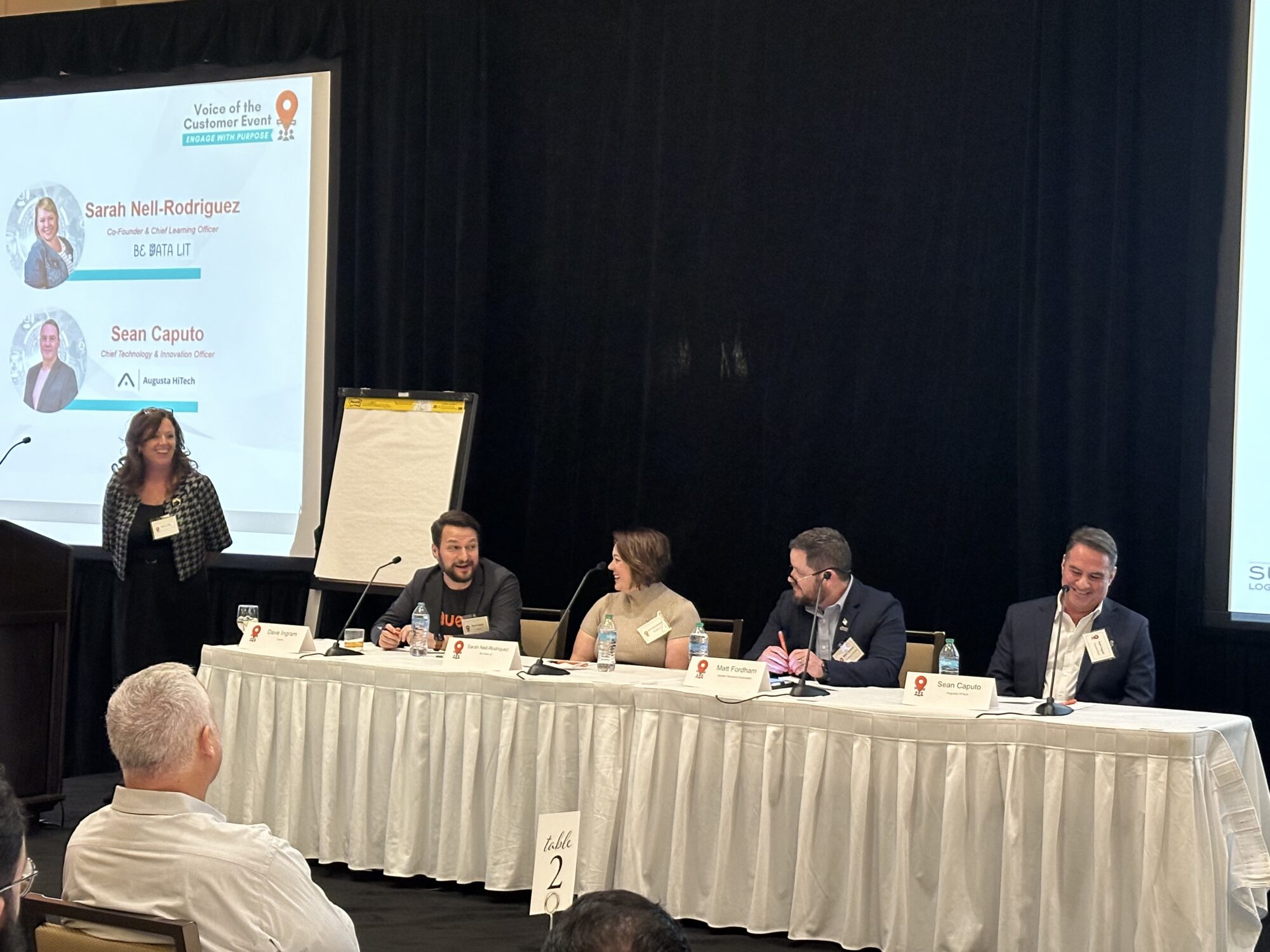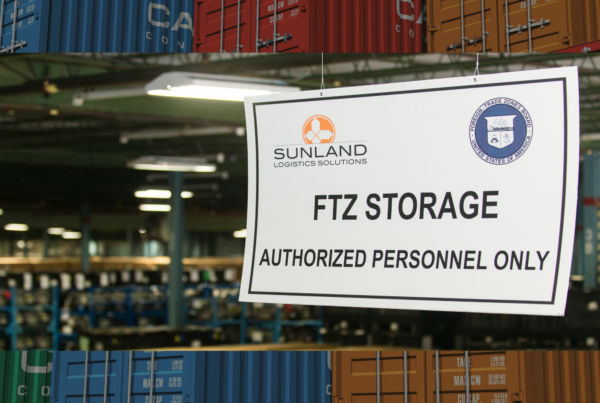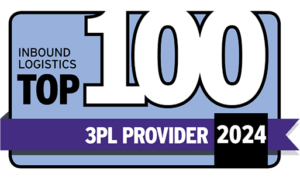Sunland Logistics Solutions hosted its 2025 Voice of the Customer event kicking it off with an engaging panel discussion,“Embracing the A.I. Era: Insights to Help Lead Your Supply Chain & Organization Forward.”
Moderated by: Melissa Scott, VP of Information Technology, Sunland Logistics Solutions
Panelists: Matthew Fordham (ARA), Sean Caputo (Augusta HiTech), Dave Ingram (Querri), Sarah Nell-Rodriquez (Be Data Lit)
The panel discussion focused on practical considerations for implementing Artificial Intelligence (AI) within supply chain and logistics organizations. The panel of experts emphasized the importance of a strategic and well-informed approach, highlighting the need for proper planning, data management, security considerations, and workforce adaptation. The consensus was that AI is not a magic bullet, but rather a tool that requires careful consideration and integration to achieve desired outcomes. The following are key themes and ideas from the discussion.
Understanding the Fundamentals of AI:
- Evolution of Machine Learning: AI is presented as an evolution of machine learning. As Dave Ingram stated, “AI is an evolution of machine learning; humans need to be able to understand the results.” This underscores the importance of not viewing AI as a black box, but rather understanding its output and implications.
- Strategic Adoption: The panelists stressed that AI should be adopted for the right reasons, focusing on identifying repetitive processes and avoiding implementations for areas like understanding vision or passion. Sean Caputo advised, “identify repetitive things/processes; embrace AI for the right reasons.”
Security and AI:
- Protection is Paramount: The panel emphasized the necessity of prioritizing security when integrating AI.
- Understanding AI Infrastructure: Matthew Fordham highlighted the importance of understanding where AI systems reside in order to appropriately protect them: “need to understand where AI lives to know where to protect.”
- Vetting AI Providers: Questions such as data location, cross-pollination risks, and the AI provider’s client base are crucial. Sean Caputo urged, “need to ask and evaluate what other companies your AI provider does business with; where does your data reside; is there a risk of data cross-pollination…”
- Leverage Existing Tools: Don’t neglect your existing security tools when implementing AI solutions, according to Matthew Fordham: “look to leverage existing tools for security use.”
AI Strengths and Limitations:
- Human Oversight is Crucial: AI needs the right human support structure in place. According to Dave Ingram: “key is to have knowledgeable people in place that use the data; need proper structure in place around AI; there is a sliding scale of importance”
- Not for All Tasks: Panelists agreed AI should not be used for tasks that require understanding of a company’s vision or passion.
Where to Begin with AI Implementation:
- Focus on Repetitive Tasks: The “Triple-D” framework (Dull, Dirty, Dangerous) was suggested by Matthew Fordham as a starting point. “Robots, think “Triple-D”; dull (repetitive, human error prone), dirty, dangerous”.
- Administrative Tasks: Identifying administrative tasks that could be automated or made more efficient was another suggestion for how to start implementing AI. Sarah Nell-Rodriquez suggested starting with administrative tasks: “think about administrative tasks; look at where your Net Promotor Score could be affected.”
- Disruptive Opportunities: Dave Ingram noted that businesses should look for opportunities to disrupt current processes by adding a layer of intelligence: “look for opportunities to be disruptive; is there an opportunity to infuse layer of intelligence in the business”.
Data’s Role in AI:
- Problem-First Approach: Before focusing on data structure, identify the problem you are solving. Dave Ingram pointed out, “Sometimes the data structure does not matter; you need to know, and understand, what problem you are trying to solve then work on the data structure”.
- AI as Extension of Data Strategy: Sarah Nell-Rodriquez emphasized that AI should be seen as an extension of a company’s overall data strategy, not a separate entity, “AI is an expansion of your data strategy not a standalone strategy”.
- Data Quality and Vetting: Clean data, visibility, and sanity checks are crucial. Matthew Fordham emphasized: “Data visibility and vetting are important; don’t forget to sanity check data and results.”
Implementation Best Practices:
- Align Goals: Ensure that goals are aligned before implementing AI. Sarah Nell-Rodriquez encouraged aligning goals: “sometimes goals are not aligned before AI implementation”.
- Education and Training: Focus on how to educate teams to interact with AI, emphasizing empathy, openness and transparency, according to Sarah Nell-Rodriquez.
- Workshop and Use Case Driven Approach: Start with workshops to determine use cases and designs. As Sean Caputo suggested: “workshop it; determine use cases; create design; utilize SMEs (subject matter experts).”
- Incremental Implementation: Avoid trying to implement AI across the entire business at once. As Dave Ingram noted: “don’t boil the ocean; try to create leverage with AI.”
Emerging Trends:
- AI Agents: Dave Ingram highlighted the rise of AI agents as a future trend.
- Hybrid Learning: There is a trend towards hybrid learning that combines technical education with training in how to interact with AI. Sarah Nell-Rodriquez noted: “there is adoption of hybrid approach where we learn how to interact with AI because we still need critical thinking”.
- Predictive Maintenance and Optimization: Matthew Fordham spoke about predictive maintenance on equipment, QC functions, supply chain optimization, and process improvement identification.
- Product Velocity: Sean Caputo mentioned product velocity and combining data as emerging trends.
The panel discussion provided a valuable overview of how to strategically approach AI implementation. The panelists stressed that AI is a powerful tool, but its successful adoption relies on a well-defined strategy, data quality, security awareness, and workforce adaptation. The key takeaway is to approach AI with a practical, problem-solving mindset, focusing on areas that will bring the most value to the organization.
Source: Transcript of Sunland Logistics Solutions event, “Embracing the A.I. Era”
